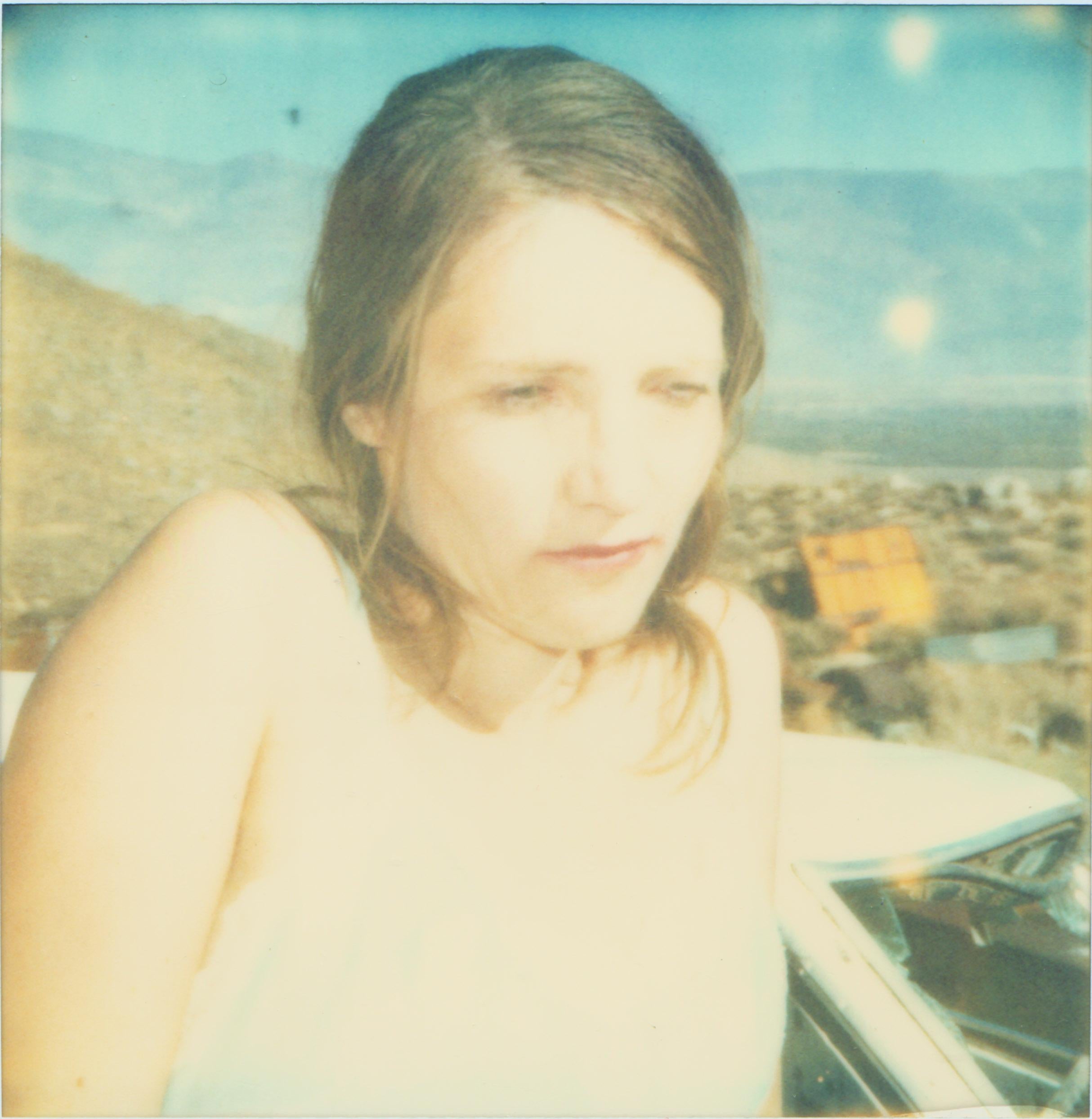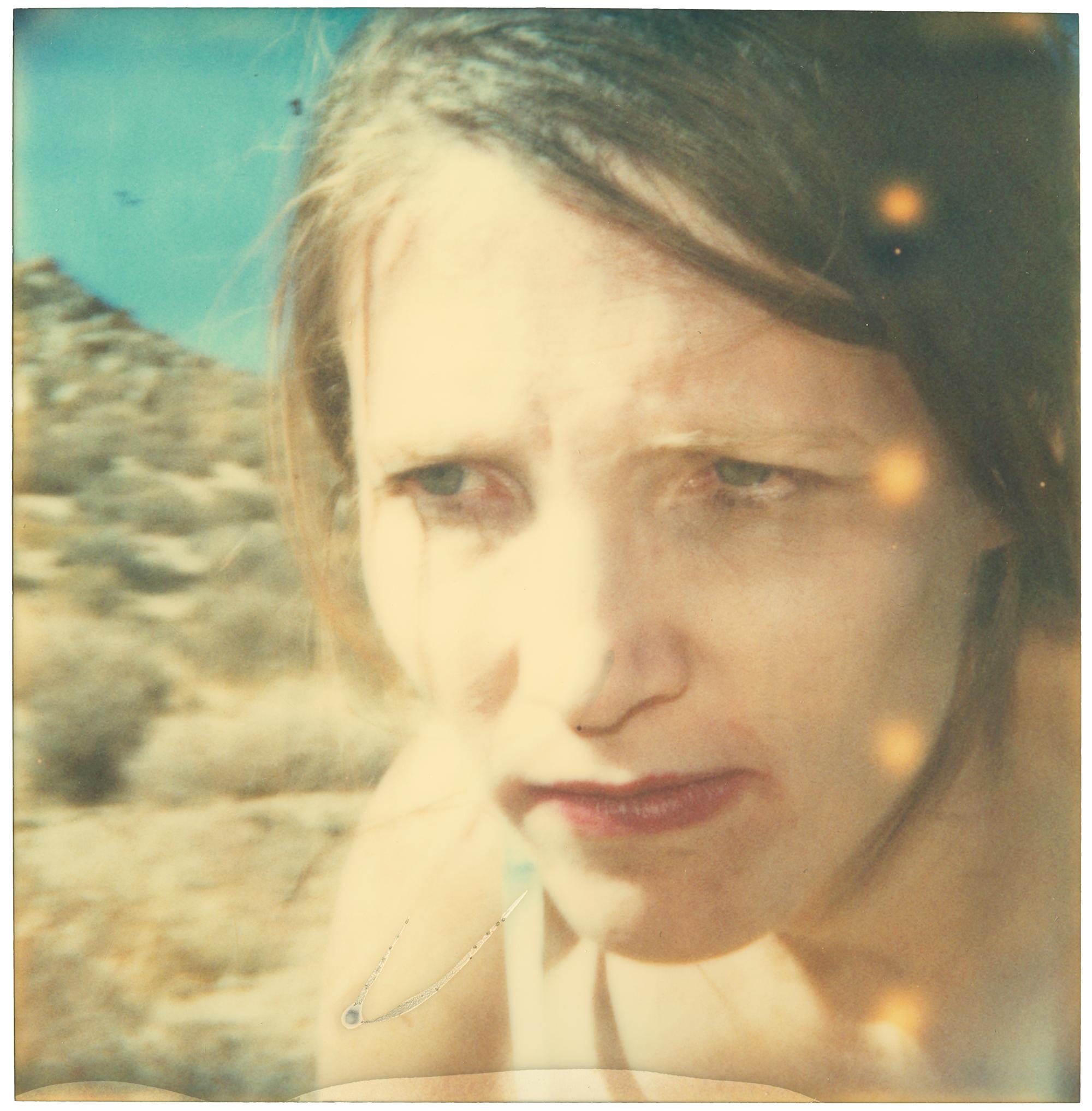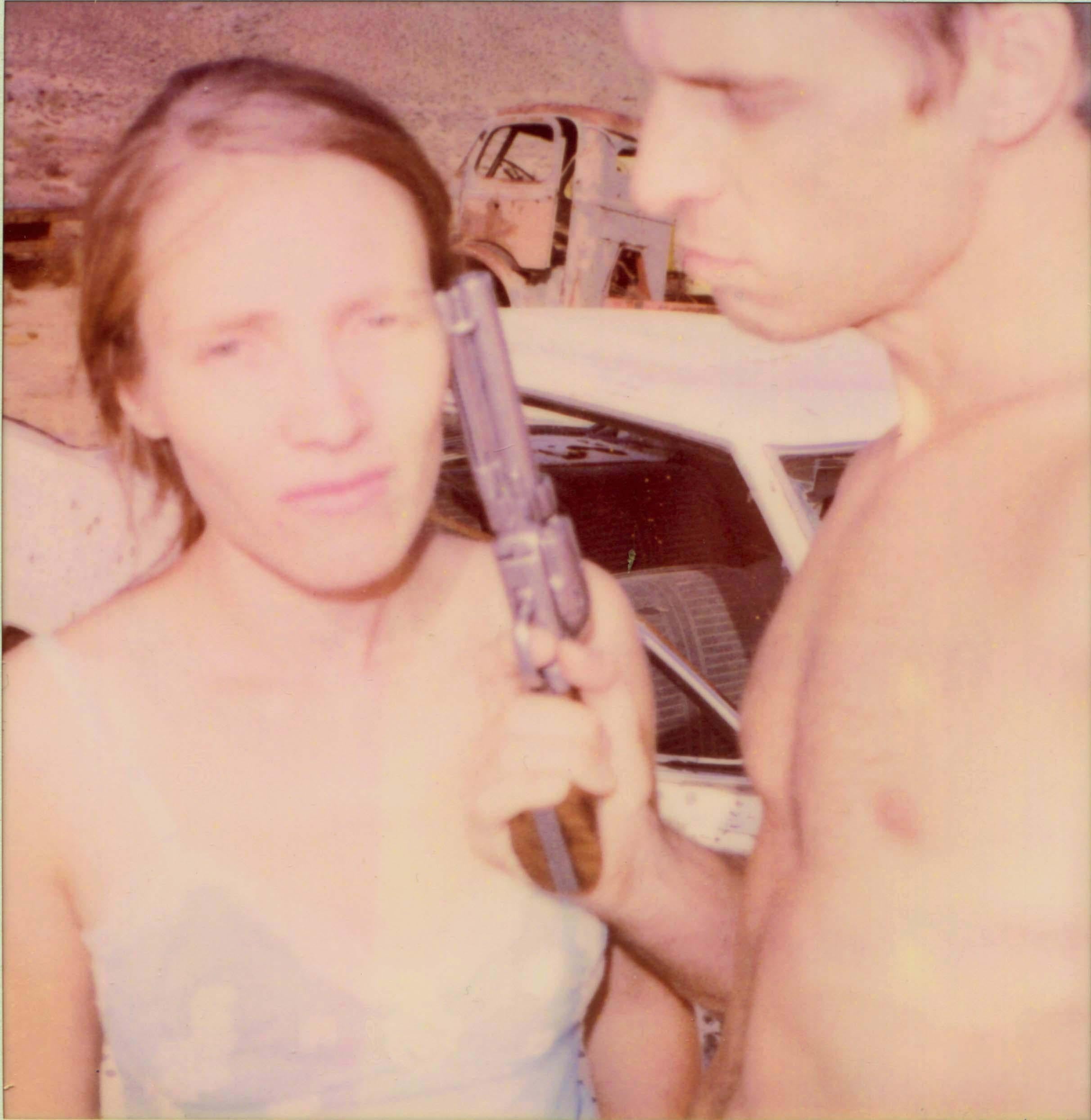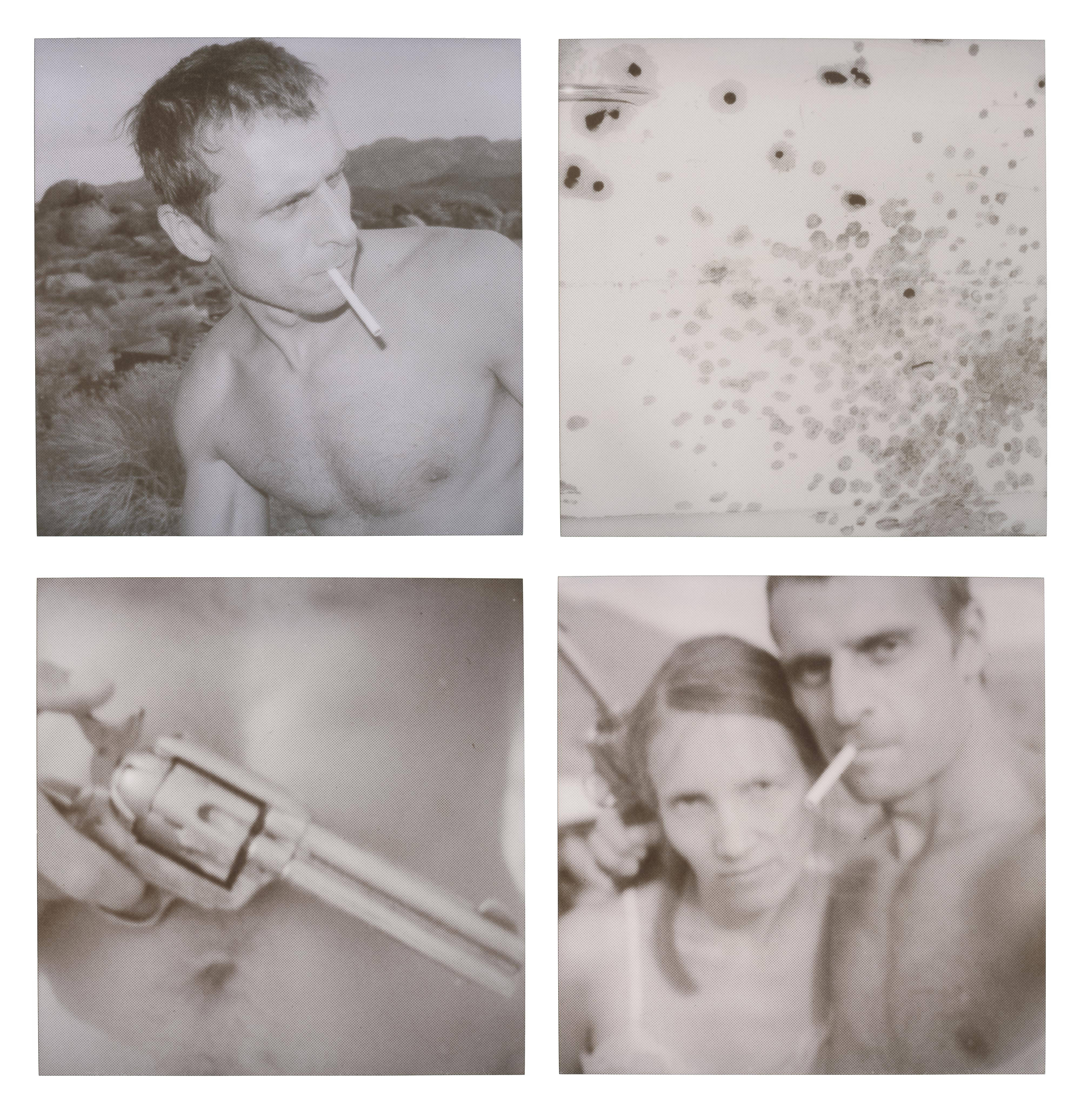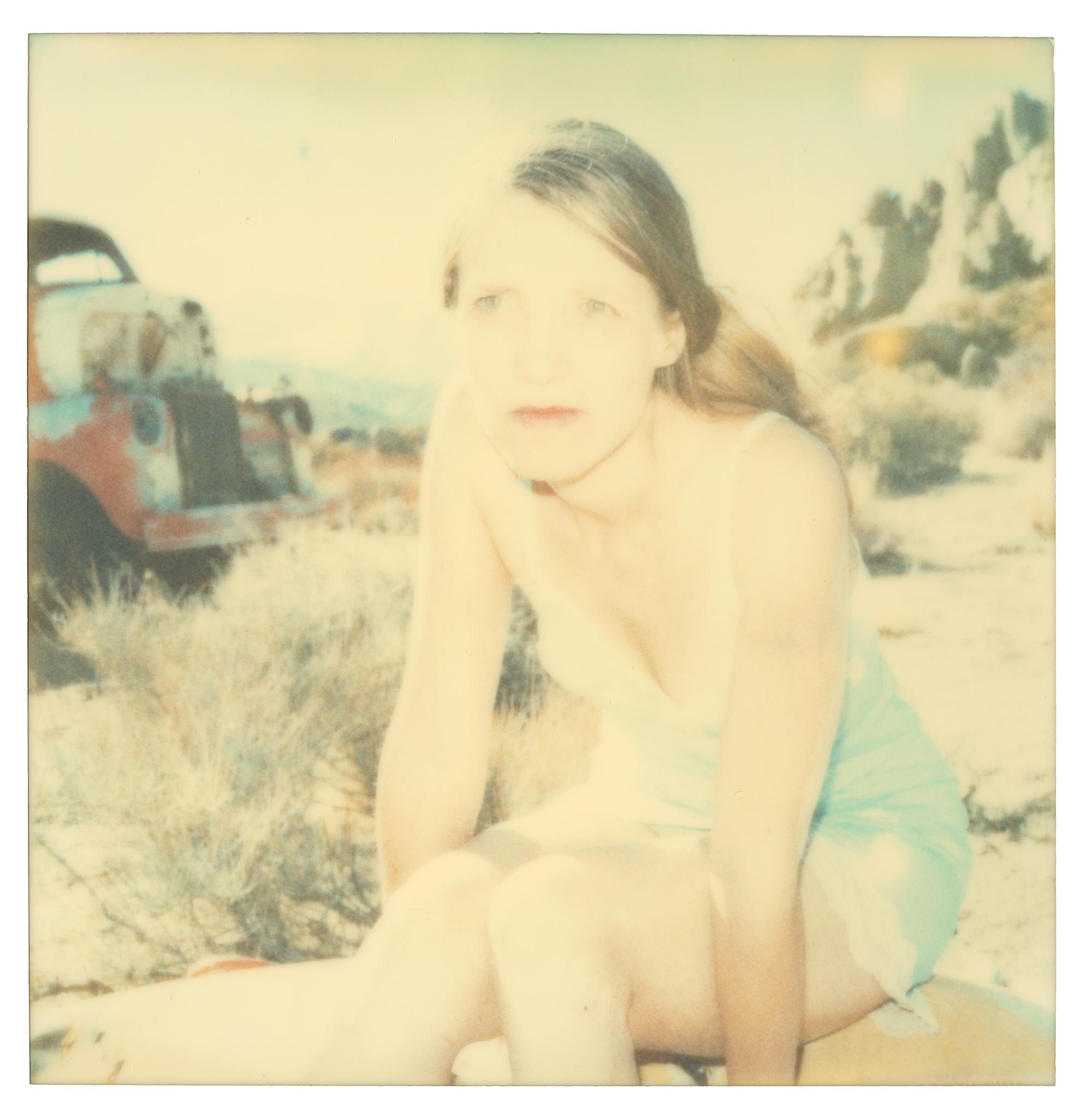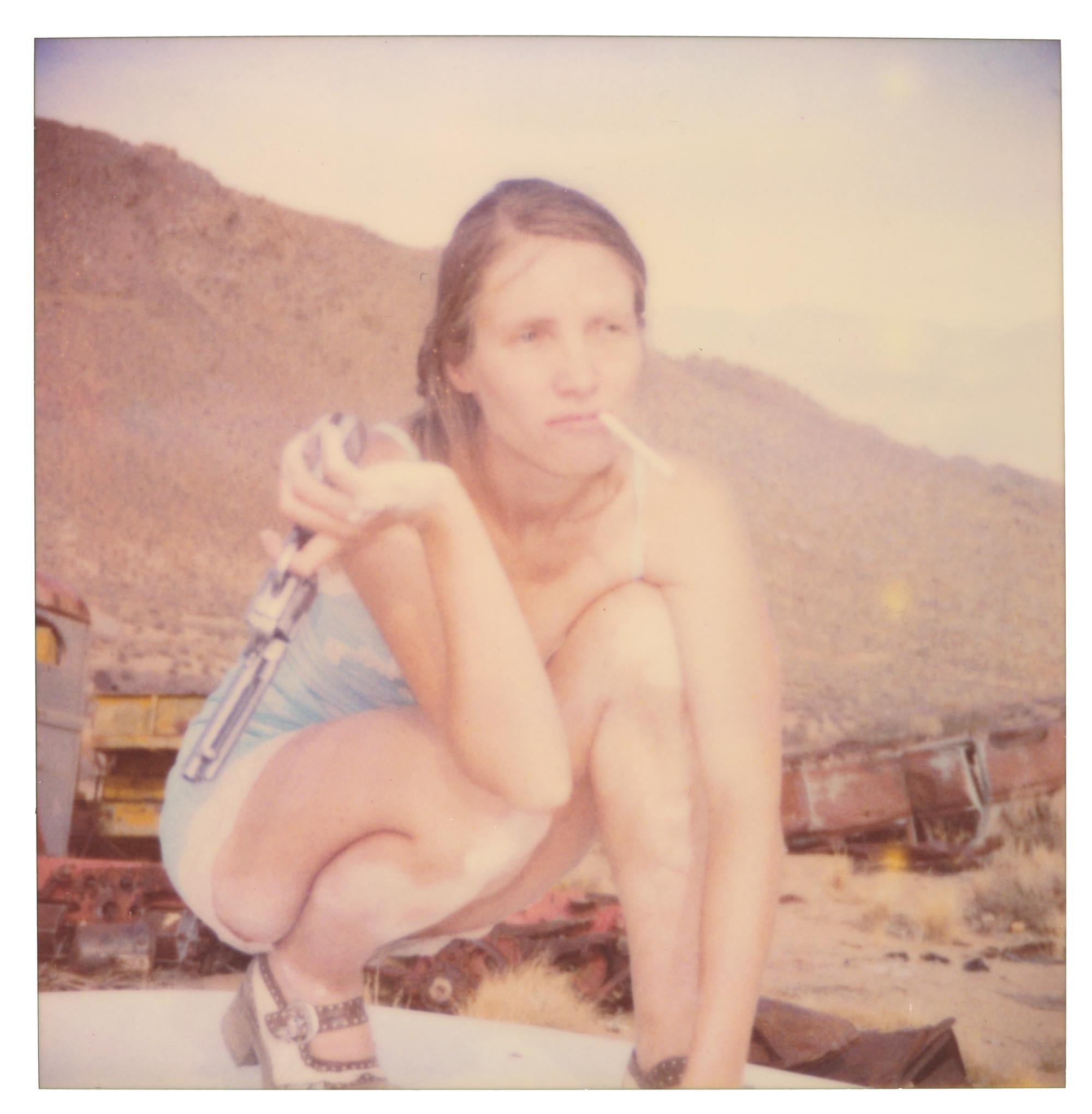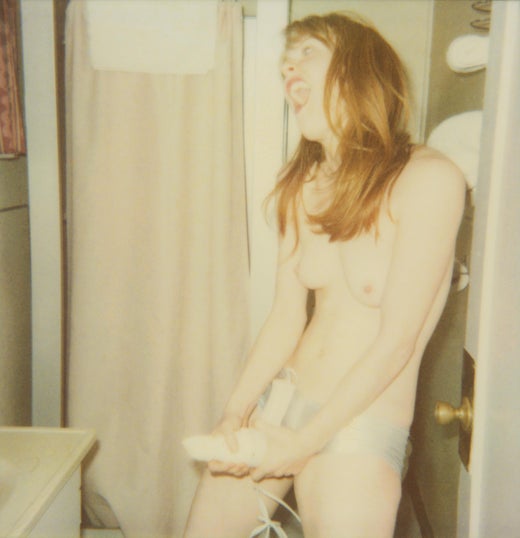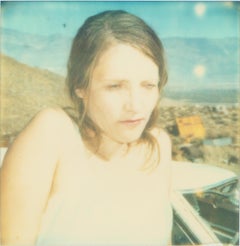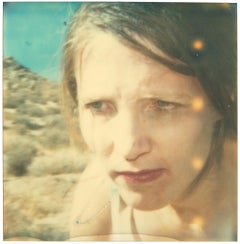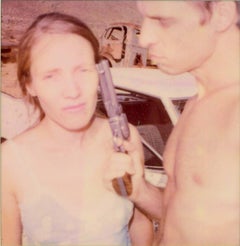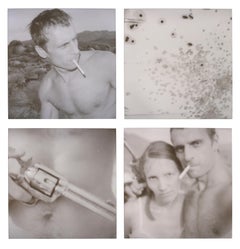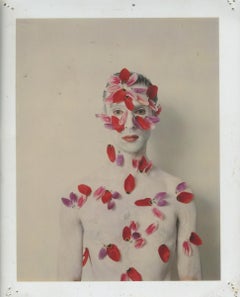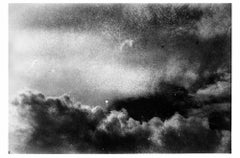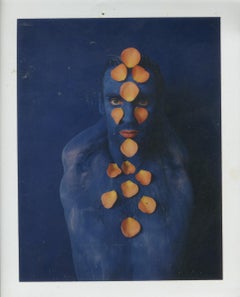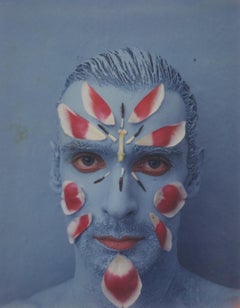Items Similar to Randy and I I (Wastelands) - Polaroid
Want more images or videos?
Request additional images or videos from the seller
1 of 2
Stefanie SchneiderRandy and I I (Wastelands) - Polaroid2007
2007
$380
£290.53
€332.88
CA$535.99
A$583.56
CHF 311.60
MX$7,044.47
NOK 3,917.40
SEK 3,643.63
DKK 2,486.42
About the Item
Randy and I (Wastelands) - 2003
20x20cm,
Edition of 10, plus 2 Artist Proofs.
Archival C-Print, based on the original Polaroid.
Artist inventory Number 1170.
Signature label and Certificate.
Not mounted.
For sale is a piece from the Wastelands series.
Published in: WASTELANDS, published by edition braus, Wachter Verlag, Heidelberg, 2006 (monograph)
Exhibited:
Wastelands, Städtische Galerie, Waldkraiburg, Germany (S) (2006) / Wastelands, Zephyr, Mannheim, Germany (S) (catalog) (2006) Wastelands, Kunstverein Recklinghausen, Germany (S) (2007), Stranger Than Paradise, Scott White Contemporary, San Diego, (S) (2012)
Reality with the Tequila:
Stefanie Schneider’s Fertile Wasteland
by James Scarborough
“How much more than enough
for you for I for both of us darling?”
(E. E. Cummings)
Until he met her, his destiny was his own. Petty and inconsequential but still his own. He was cocksure and free, young and unaccountable, with dark hair and aquiline features. His expression was always pensive, a little troubled, but not of a maniacal sort. He was more bored than anything else. With a heart capable of violence.
Until she met him, she was pretty but unappreciated. Her soul had registered no seismic activity. Dust bowl weary, she’d yet to see better days. A languorous body, a sweet face with eyes that could be kind if so inclined.
Until she met him, she had not been inclined.
It began when he met her. She was struck in an instant by his ennui. The sum of their meeting was greater than the imbroglios and chicaneries of their respective existences. He was struck by the blank slate look in her eyes. They walked, detached and focused on the immediate, obscenely unaware of pending change across a terrain of mountainous desert, their eyes downcast and world-weary, unable to account for the buoyant feeling in her heart. His hard-guy shtick went from potentiality to ruse. The gun was not a weapon but a prop, a way to pass time. Neither saw the dark clouds massing on the horizon.
They found themselves alone in the expanses of time, unaware of the calamity that percolated even as they posed like school kids for the pictures. Happiness brimmed in that wild terrain. Maybe things were beginning to look up.
That’s when the shooting started…
Stefanie Schneider assumes that our experience of lived reality (buying groceries, having a relationship with someone, driving a car) does not correspond to the actual nature of lived reality itself, that what we think of as reality is more like a margarita without the tequila.
Stefanie Schneider’s reality is reality with the tequila. She does not abolish concepts that orient us, cause and effect, time, plot, and story line, she just plays with them. She invites us to play with them, too. She offers us a hybrid reality, more amorphous than that with a conventional subject, verb, and predicate. Open ended, this hybrid reality does not resolve itself. It frustrates anyone with pedestrian expectations but once we inebriate those expectations away, her work exhilarates us and even the hangover is good. An exploration of how she undermines our expectation of what we assume to be our lived reality, the reasons why she undermines our expectations, and the end-result, as posited in this book, will show how she bursts open our apparatus of perception and acknowledges life’s fluidity, its density, its complexity. Its beauty.
She undermines expectations of our experience of reality with odd, other worldly images and with startling and unexpected compressions and expansions of time and narrative sequence. The landscape seems familiar enough, scenes from the Old West: broad panoramic vistas with rolling hills dotted with trees and chaparral, dusty prairies with trees and shrubs and craggy rocks, close-up shots of trees. But they’re not familiar. These mis en-scenes radiate an unsettling Picasso Blue Period glow or the intense celestial blue of the cafe skies that Van Gogh painted in the south of France. Yellow starbursts punctuate images as if seen through the viewfinder of a flying saucer. At the same time, objects appear both vintage and futuristic, the landscape of a post apocalyptic world.
Landscapes change seemingly at random as do the seasons. Stefanie Schneider offers no indication of how time flows here, except that it conceivably turns in on itself and then goes its merry way. Time is a river whose source is a deep murky spring which blusters about with an occasional swirling eddy.
That Stefanie Schneider thwarts an easy reading is obvious but why does she do this? Since she will not countenance anything linear, logical, or sequential, and because she does not relish anything concrete and specific, she has to roil things up a bit. Nor does she seem comfortable with a book of images that is settled, discrete, and accountable. Instead she wants to create a panoply of anxious moments that refuse to settle down into any predetermined reading. She seeks to assemble the elements, establish a provisional cosmology and then let each of us bring our own life experiences to bear on the enterprise. She unravels the paucity of a universe compromised by a matrix of either/or and replaces it with a kaleidoscopic neither/both cornucopia.
No fan of Descartes, she does not adhere to anything predicated on cogito ergo sum. No, the chance to present a universe of limitless iterations and utterances, open-ended, casualty thwarting, intrigues her. She broaches a Heraclitan world: she shows that attempts to master, manage, and hoard time prove to be as elusive as a blind man trying to grab a salmon barehanded from a cold mountain stream. Even within the clear cut parameters of the Old West universe onto which she gloms, she shows that time is a bandit, that it is a mirage, that it is as unpredictable as it is indefinable and infinite. She coaxes us, scene by scene a slow motion, out of sequence film clip, to agree with her that a running moat of lived reality easily overwhelms a castle of rationality.
Stefanie Schneider does not mount a demolition effort much less a deconstruction one. Rather, she dismantles our expectations and sets about rebuilding not things but their connections anew. She is the mistress of the synapses. Indeed all these annoying ambiguities and irritating ambiances set the stage for a very particular certainty, one kernel of truth amidst these skewed and open ended fields of inquiry. What connects all these images, in whatever order they might be presented1, is what I call an Augenblick, the mental distance between each page in whose expanse occurs the processing of shards of lived experience between these blinks of an eye that comprise the pages of Wastelands. During these innumerous Augenblicke, we take whatever shifts and turns that Stefanie Schneider throws at us, recalibrate our bearings, and then move on, at least until the next inevitable obstruction.
Irritating (and enlightening) as these shots may be, they’re nothing new. Rilke writes that, instead of trying to understand the quiddities of things, we should just be joyous at their mystery, just assume that they’re written in a lovely script that neither you nor anyone else can ever understand. Keats writes about being “awake forever in a sweet unrest,” although he’s talking about love. Stefanie Schneider makes us work for this idea of an Augenblick, but the result is worth it. The scenes and their sequencing dazzle us in a Borgesian Hall of Mirrors. Stefanie Schneider shows us that reality is anything but linear and user friendly, but once one becomes accustomed to her enhanced dimension of space and time, we see the world in all its multifarious beauty and rapture. For that reason, Stefanie Schneider’s Augenblicke show us that reality may be a wasteland but it is as fertile as fertile can be.
1 I refer to Julio Cortazar’s novel, Hopscotch, in which he presents his story in a linear
way, with consecutive chapters that follow a particular coherence. In a note at the be-
ginning of the novel, he suggests an alternative reading via a new sequence of chapters.
So instead of reading chapter 1 first, chapter 2 second, you read, say chapter 57 first,
chapter 32 second, chapter 1 third and so on to form a new story. Similarly, Stefanie
Schneider’s Wastelands offers a multitude of coherences.
- Creator:Stefanie Schneider (1968, German)
- Creation Year:2007
- Dimensions:Height: 7.88 in (20 cm)Width: 7.88 in (20 cm)Depth: 0.04 in (1 mm)
- Medium:
- Movement & Style:
- Period:
- Condition:
- Gallery Location:Morongo Valley, CA
- Reference Number:1stDibs: LU652314549282
Stefanie Schneider
Stefanie Schneider received her MFA in Communication Design at the Folkwang Schule Essen, Germany. Her work has been shown at the Museum for Photography, Braunschweig, Museum für Kommunikation, Berlin, the Institut für Neue Medien, Frankfurt, the Nassauischer Kunstverein, Wiesbaden, Kunstverein Bielefeld, Museum für Moderne Kunst Passau, Les Rencontres d'Arles, Foto -Triennale Esslingen., Bombay Beach Biennale 2018, 2019.
About the Seller
4.9
Platinum Seller
Premium sellers with a 4.7+ rating and 24-hour response times
Established in 1996
1stDibs seller since 2017
1,050 sales on 1stDibs
Typical response time: 1 hour
- ShippingRetrieving quote...Shipping from: Morongo Valley, CA
- Return Policy
More From This Seller
View AllHide Out (Wastelands) - Polaroid
By Stefanie Schneider
Located in Morongo Valley, CA
Hide Out (Wastelands) - 2003
20x20cm,
Edition of 10, plus 2 Artist Proofs.
Archival C-Print, based on the original Polaroid.
Artist inventory Number 1168.
Signature label and Cert...
Category
Early 2000s Contemporary Portrait Photography
Materials
Archival Paper, Photographic Paper, C Print, Color, Polaroid
Insatiable (Wastelands) - Contemporary, Polaroid, 21st Cetury, Polaroid
By Stefanie Schneider
Located in Morongo Valley, CA
Insatiable - he came to my Valley (Wastelands)
Edition 2/5 , 57x56cm, 2003,
analog C-Print, hand-printed by the artist on Fuji Crystal Archive Paper,
based on a Polaroid.
Artist i...
Category
Early 2000s Contemporary Color Photography
Materials
Archival Paper, Photographic Paper, C Print, Color, Polaroid
Randy and I (Wastelands)
By Stefanie Schneider
Located in Morongo Valley, CA
Randy and I - (Wastelands) - 2003
20x20cm,
Edition of 10, plus 2 Artist Proofs.
Archival C-Print, based on the original Polaroid.
Artist inventory Number 1171.
Signature label a...
Category
Early 2000s Contemporary Color Photography
Materials
Archival Paper, Photographic Paper, C Print, Color, Polaroid
Snap–15 Minutes of Fame (Wastelands) - analog, not mounted, Polaroid
By Stefanie Schneider
Located in Morongo Valley, CA
Snap–15 Minutes of Fame (Wastelands) - 4 pieces, 2003
Edition of 5,
105x100cm each, 220x220cm installed.
Analog C-Prints, hand-printed by the artist on Fuji Crystal Archive Paper,...
Category
Early 2000s Contemporary Portrait Photography
Materials
Archival Paper, Photographic Paper, C Print, Color, Polaroid
Jordan (Wastelands) - Contemporary, 21st Century, Polaroid, Figurative
By Stefanie Schneider
Located in Morongo Valley, CA
Jordan (Wastelands) - 2003
Edition of 10,
38x36cm,
Archival C-Print, based on the Polaroid.
Artist inventory Number 1176.13.
Signature label and Certificate.
Not mounted.
The wo...
Category
Early 2000s Contemporary Color Photography
Materials
Metal
Posing I (Wastelands) - Polaroid, Expired. Contemporary, Color
By Stefanie Schneider
Located in Morongo Valley, CA
Posing I (Wastelands) - 2003
Edition of 5,
20x20cm,
Archival C-Print, based on the Polaroid.
Signature label and Certificate.
Artist Inventory No 1174.01
Not mounted.
Gaze upon S...
Category
Early 2000s Contemporary Portrait Photography
Materials
Archival Paper, Photographic Paper, C Print, Color, Polaroid
You May Also Like
Untitled Polaroid 23, Unique Self Portrait Photograph by Dietmar Busse
By Dietmar Busse
Located in New York, NY
Untitled Polaroid 23, Unique Self Portrait Photograph by Dietmar Busse.
2001
Signed and dated in black ink, verso
Polaroid (Unique)
5 x 4 inches, image
Contact gallery for price.
Category
Early 2000s Contemporary Photography
Materials
Polaroid
Expired_14_2020 - Photograph by Serena Zeppilli
Located in Roma, IT
This photograph Expired_14_2020 was taken by the Italian photographer Serena Zeppilli.
It is part of the series "I was looking for something that I...
Category
21st Century and Contemporary Contemporary Figurative Photography
Materials
Photographic Paper
Untitled Polaroid 21, Unique Polaroid Self Portrait by Dietmar Busse
By Dietmar Busse
Located in New York, NY
This is a unique polaroid photograph by Dietmar Busse.
Untitled Polaroid 21
2001
Signed and numbered in black ink, verso
Polaroid (Unique)
5 x 4 inches, image
Contact gallery fo...
Category
Early 2000s Contemporary Photography
Materials
Polaroid
Untitled Polaroid 24, Unique Polaroid Self Portrait Photograph by Dietmar Busse
By Dietmar Busse
Located in New York, NY
Untitled Polaroid 24, Unique Polaroid Self Portrait Photograph by Dietmar Busse
Untitled Polaroid 24
2001
Signed and dated in black ink, verso
Polaroid (Unique)
5 x 4 inches, ima...
Category
Early 2000s Contemporary Portrait Photography
Materials
Polaroid
Vintage 20X24 Format Polaroid Signed Surrealist Photograph Eve Sonneman Photo
By Eve Sonneman
Located in Surfside, FL
This is from a show at Sidney Janis Gallery and is from the estate of Joan Sonnabend.
Eve Sonneman (born in Chicago on 1946) is an American photographer and artist. She did a series ...
Category
1990s Contemporary Color Photography
Materials
Color, Polaroid
"Pola Girls 7" Nude Polaroid Photography - Unique piece by Larsen Sotelo
By Larsen Sotelo
Located in Culver City, CA
"Pola Girls 7" Nude Polaroid Photography - Unique piece by Larsen Sotelo
4.2" x 3.5" inch - including white Polaroid frame
3.1" x 3,1" inch - image area
C...
Category
21st Century and Contemporary Contemporary Nude Photography
Materials
Polaroid
More Ways To Browse
Marilyn Monroe Photographic Print
Art Devo Prints
Bob Willoughby Audrey Hepburn Photographs
David Bowie Wolf
Drew Barrymore
Frida Kahlo Photograph
Gwen Stefani
Vintage Beard Styles
Wong Kar Wai
Brigitte Bardot Dress
Halsman Marilyn
Ian Curtis
Italian Vintage Film
Kiss Photo
Paul Newman Photo
Terry Moore
Van Halen
Vintage Bikini Posters
